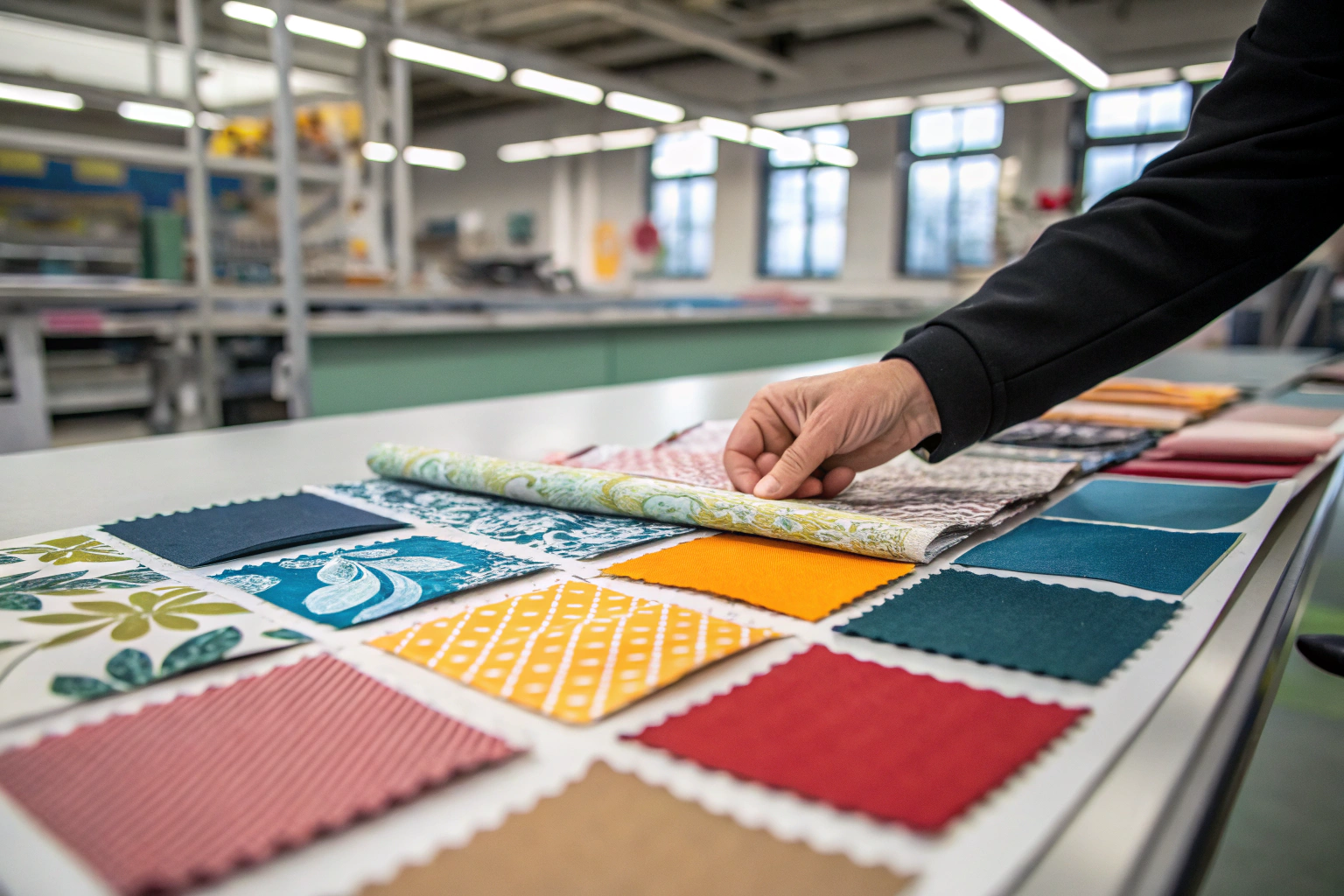For buyers who are looking to improve their outdoor fabric products, self-cleaning TiO₂ nanocoated awning fabrics have become one of the most sought-after materials in the market. These fabrics combine durability, weather resistance, and low maintenance, making them ideal for both residential and commercial applications. However, sourcing them efficiently while ensuring quality and cost-effectiveness can be challenging.
Self-cleaning TiO₂ nanocoated fabrics are engineered with advanced nano-technology that breaks down dirt and prevents mold growth when exposed to sunlight. This means end-users can enjoy longer product lifespans and lower cleaning costs. The market for these fabrics has been growing rapidly in Europe, North America, and high-end Asian markets, so knowing the sourcing process is crucial for staying competitive.
If you are planning to purchase these fabrics for your brand, understanding supplier qualifications, testing standards, and logistics considerations will help you avoid costly mistakes and secure reliable long-term partnerships.
Key Features of TiO₂ Nanocoated Awning Fabrics
TiO₂ nanocoating gives fabrics unique functional advantages that go beyond traditional water-repellent finishes. By applying titanium dioxide particles at the nanoscale, the coating creates a photocatalytic effect that actively decomposes organic dirt when exposed to UV light.
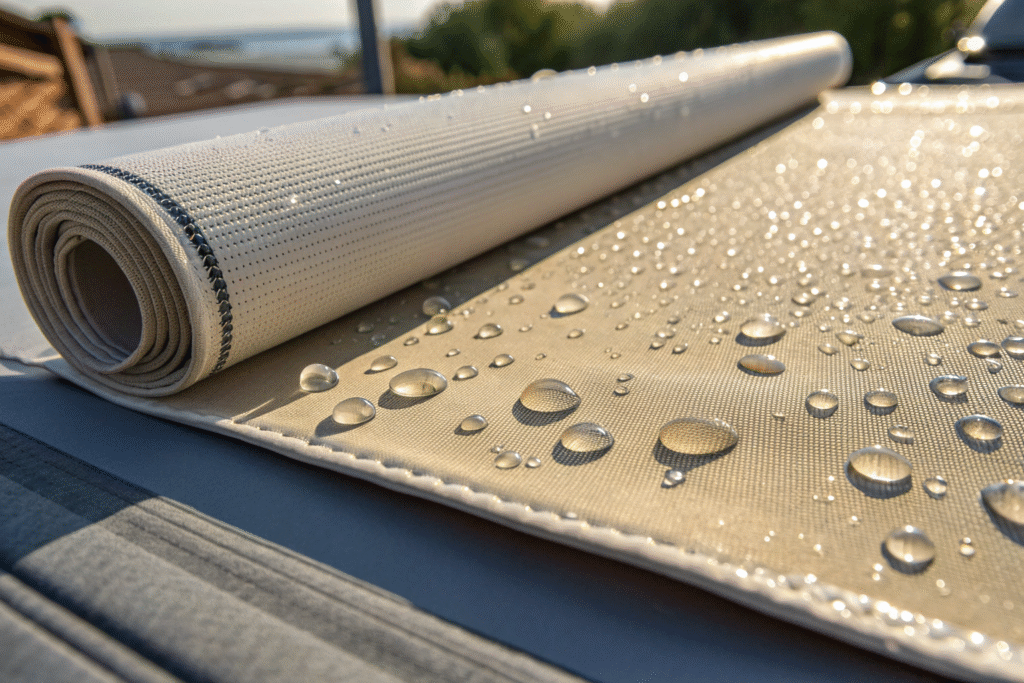
This technology not only enhances self-cleaning performance but also boosts UV resistance, color fastness, and fabric longevity. The result is an awning material that stays clean longer, requires less maintenance, and maintains its aesthetic appeal for years.
What Makes TiO₂ Coatings Different?
Unlike regular waterproof coatings, TiO₂-based nanocoatings work actively rather than passively. When sunlight hits the surface, it triggers a photocatalytic reaction that breaks down pollutants and prevents algae buildup. You can learn more about photocatalysis in textiles or check TiO₂ functional fabric studies.
How Does It Benefit Outdoor Applications?
For awnings, this technology means fewer cleaning cycles, longer-lasting colors, and reduced mold damage in humid climates. Buyers can review outdoor fabric performance standards and UV resistance testing when comparing suppliers.
Finding Reliable Suppliers in China
.
China remains the leading producer of advanced awning fabrics due to its integrated textile clusters, experienced labor force, and strong supply chains. Keqiao, Zhejiang, is one of the largest hubs, offering everything from weaving to nanocoating and final packaging.
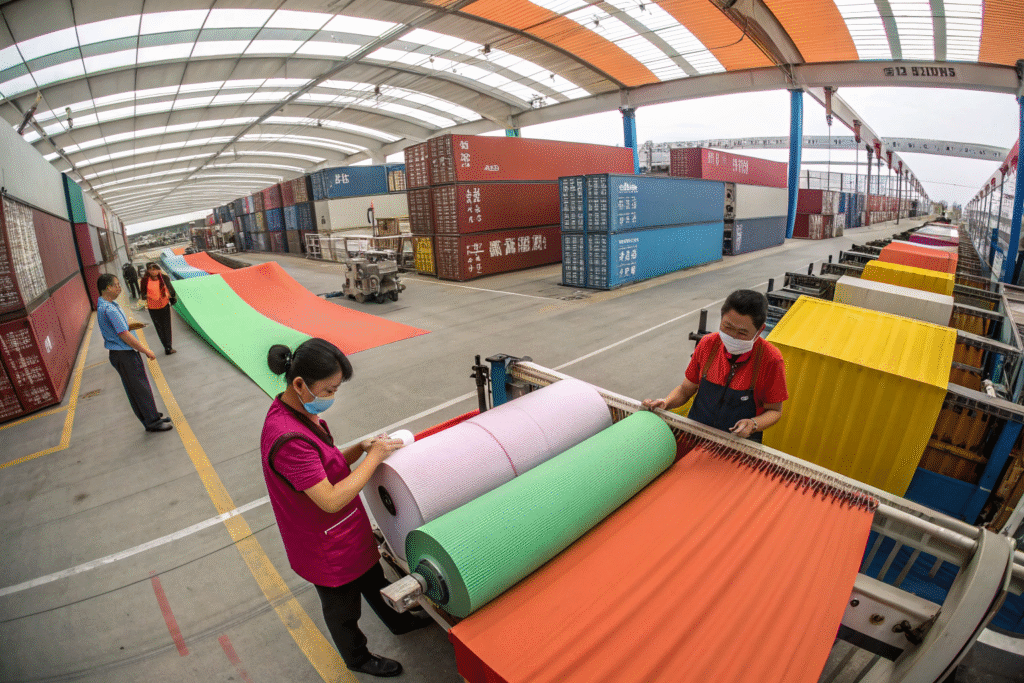
To find trustworthy partners, buyers should attend major trade shows, use verified sourcing platforms, and conduct factory audits to verify production capabilities and quality certifications.
Which Trade Fairs Should You Attend?
Trade shows like the China Textile Expo in Keqiao and Canton Fair are excellent opportunities to meet suppliers. Platforms like Alibaba Verified Suppliers and Global Sources also provide access to vetted manufacturers.
How to Verify Supplier Credentials?
Check for ISO, SGS, and CNAS certifications, along with customer references. You can read SGS textile inspection services and explore ISO quality management standards for guidance.
Quality Testing and Certification
Strict testing is essential for ensuring TiO₂ nanocoated awning fabrics meet international standards. Reliable suppliers often maintain in-house CNAS-accredited labs or partner with global inspection companies.
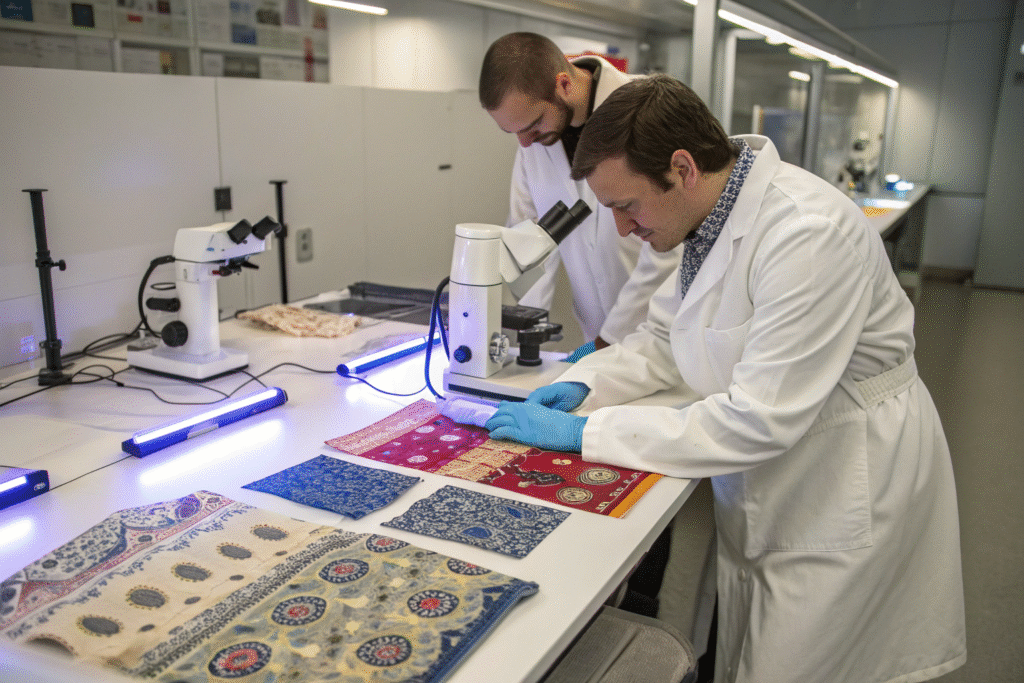
Testing should include durability, UV resistance, waterproof rating, and self-cleaning performance under simulated outdoor conditions.
What Tests Are Most Important?
Key tests include UV degradation, water repellency, and colorfastness. Learn more from AATCC testing methods and OEKO-TEX certification.
Why Certification Matters for Export?
Certifications such as OEKO-TEX® Standard 100 and REACH compliance ensure fabrics meet safety and environmental regulations. Check details on REACH textile compliance and OEKO-TEX database.
Logistics, Pricing, and Payment Terms
Even with a great product, poor logistics or unclear payment terms can cause delays and unexpected costs. Working with suppliers who have experience in exporting to your market will help you avoid problems.
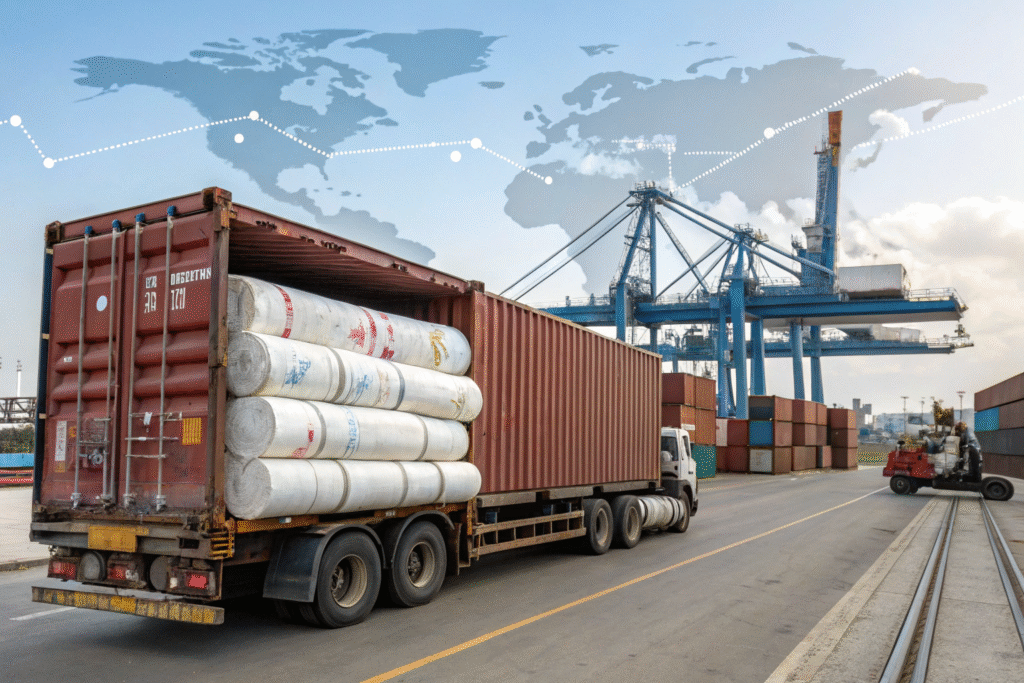
Negotiating incoterms, understanding shipping schedules, and securing competitive payment terms are critical for long-term cooperation.
What Are the Best Shipping Options?
Sea freight is cost-effective for bulk orders, while air freight suits urgent shipments. You can compare freight forwarding companies and shipping incoterms to choose the right option.
How to Negotiate Payment Terms?
Common terms include T/T, L/C, and OA. Buyers should be familiar with international trade payment methods and risk management strategies.
Conclusion
Self-cleaning TiO₂ nanocoated awning fabrics are a smart investment for businesses that want to offer durable, low-maintenance outdoor solutions. By understanding the technology, finding reliable suppliers, ensuring quality testing, and optimizing logistics, you can secure a competitive advantage in your market.
If you are ready to bring high-performance awning fabrics into your product line, we at Shanghai Fumao can provide you with fully customized solutions. Contact our Business Director, Elaine, at elaine@fumaoclothing.com to discuss your project today.

